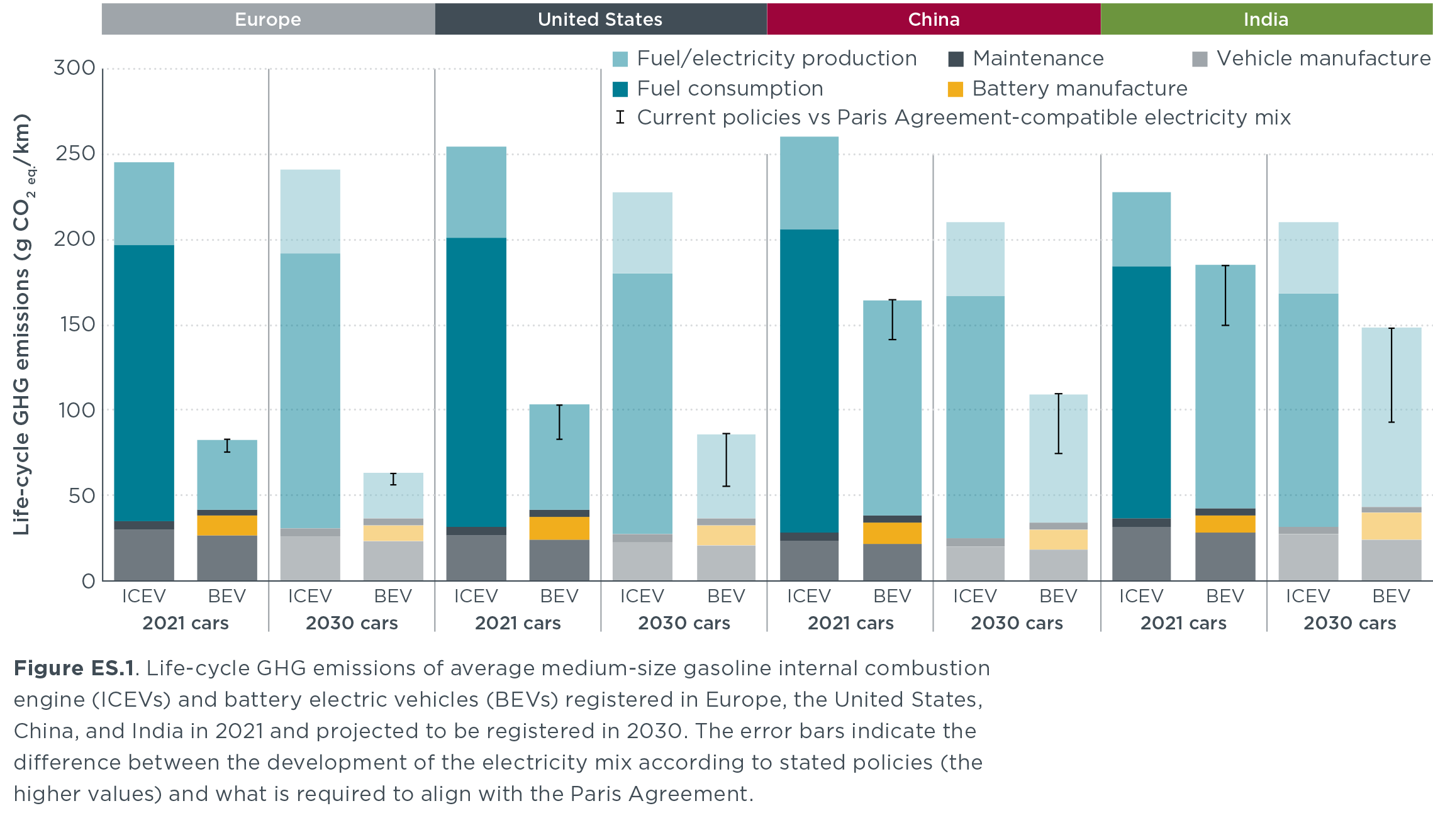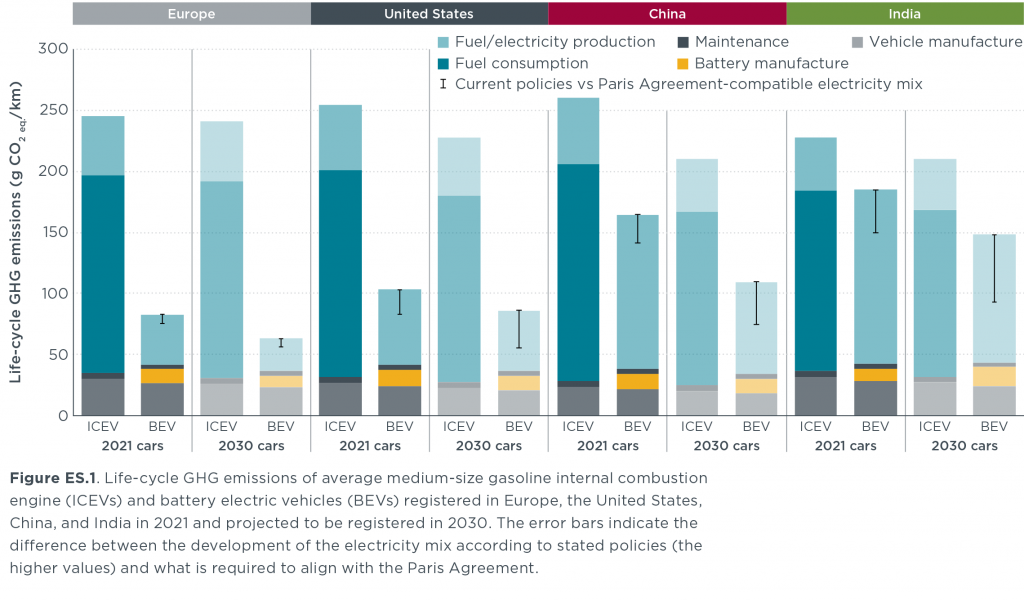Today The International Council on Clean Transportation release a report called “A global comparison of the life-cycle greenhouse gas emissions of combustion engine and electric passenger cars“, which I find a satisfying read.
Its key findings can be highlighted in the following graph:

The graph is quite dense, so let me point out a few things to help digest its main messages here:
(1) It is a lifecycle analysis of GHG emissions of cars, which means it includes GHG emissions from (a) vehicle manufacturing (b) battery manufacturing (c) fuel/electricity production and (d) fuel consumption. This alone stands out from most of the other works because this work includes most of the supply chain of a vehicle.
(2) EVs overall emit much less GHG compared to internal combustion engine vehicles (ICEV). This is true across all geographies, although the differences vary. For example, the differences in China and India are smaller compared to the Europe, because the electricity generation is mostly by coal in China and India.
(3) For ICEVs, most GHG happen while driving those vehicles. But for EVs, GHG is mostly at the electricity production.
Overall, this report convincingly show that EVs are effective in reducing GHG emissions across the entire value chain. There is no reason not to abandon ICEVs and transition to EVs.
